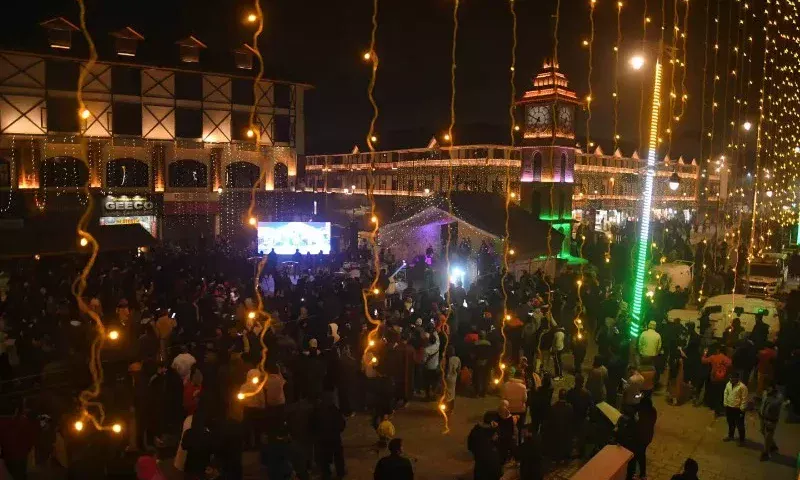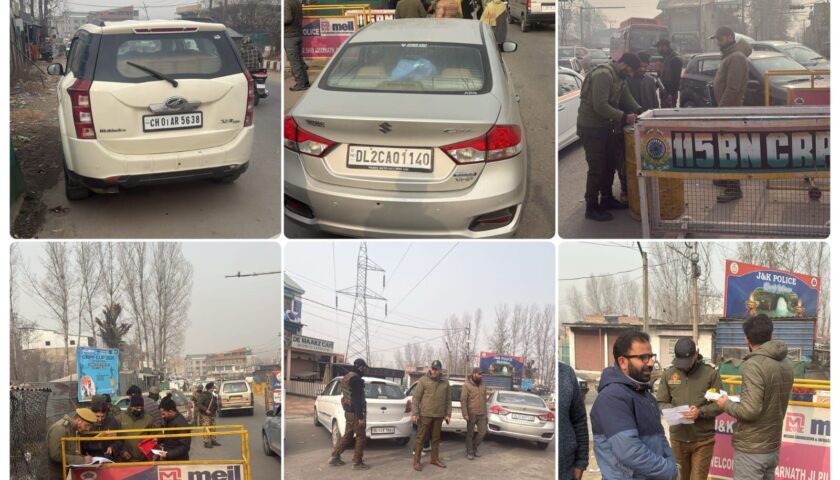Reports in the media indicate that the elite National Security Guard (NSG) is to be deployed in Kashmir as part of the counterterrorism grid. According to home ministry officials, the force would be directly involved in specific counterterrorism operations particularly in hostage situations as well as have a role in training the state police and the CRPF in an increasingly complex security scenario. There is also a hint that the NSG is being deployed to keep its specific skills honed for its actual task, which is as the country’s quick response to a surprise terrorist attack anywhere in the country.
That is both a bad and a good idea. First, an overview of security forces deployed in Kashmir indicates that a succession of security units have been inducted over the years with varying success. This saga began with the creation of the Rashtriya Rifles in the early 90s as a special counterinsurgency force. This was drawn primarily from infantry units across the country and then grouped together under two headquarters in the north and south Kashmir. Its raison d’etre was primarily to take over the situation at a time when the Jammu and Kashmir Police who perforce had to retreat from the hail of fire from AK 47s in terrorists’ hands.
Armed with mostly sticks and a few side weapons, the police had little choice but to give ground to the terrorists. The fact that some police personnel were often openly sympathetic to militants obviously made matters worse. This lacunae the RR filled admirably. Terrorists found themselves against a force trained to kill, and since the local population had little love for these foreign cadres, matter evolved very well. The essence of the RR’s success was the fact that it was a permanent force in the Valley. This helped it to maintain a certain rapport with the local population, which is the life and breath of successful CI operations. The fact that the RR has an enviable track record is apparent from the gallantry awards that it has earned, and the terrorists that it has eliminated. It is no exaggeration to say that this force was responsible for bringing back the writ of the state after the chaos of the 90s when the incident rate was in three figure digits. That’s not just because they were good. It was because it was the right tool at the right time.
As the intelligence grid improved and the ‘kill rate’ of militants climbed, the government moved the army out of Srinagar, Baramulla, Anantnag and other areas generally seen as hotbeds of unrest. The Border Security Force, which had been operating with the army for some time was thereafter given full responsibility in urban areas, together with the police, who were more of a hindrance than a help. With little previous experience in crowd control and public diplomacy, the inevitable happened. In October 1993, a BSF unit fired upon protestors killing a reported 43 civilians and injuring several more. Other such encounters followed, where the BSF became the whipping horse for worsening civil unrest. Following the recommendations of the Group of Ministers, the principle of “One Border One Force” was adopted, thereby removing BSF from counterinsurgency and returning them to the border in a phased manner starting in 2004. There is no doubt that the force achieved some remarkable successes in the 14 years that it remained in the Valley. But it came with a cost that is being paid ever since. The virtual flooding of Srinagar with troops became the norm and daily checking of civilians who had little or nothing to do with militancy. This was the time when the term ‘alienation’ came into CI lexicon.
The BSF was replaced by the Central Reserve Police Force (CRPF) which as its nomenclature suggests, is equipped and trained towards performing the role of armed police on the direction of the Central government. Set up well before the country’s Independence, the role of the CRPF seems to have been steadily enlarged. As of today, it’s list of duties include guarding of critical installations (17 percent), VIP duties (7.5 percent), rescue and relief, and riot control. It also has a mandate to check environmental degradation and to protect the flora and fauna. It’s extremely doubtful whether anyone on the ground is even aware of this function. About 10 companies guard shrines like Shri Amarnathji temple. In Kashmir, their induction in a counterinsurgency role followed typically police tactics like ‘nakas’, the hated cordon and search operation, and the setting up bunkers at critical points.
In recent years, the force has shifted back to a “law and order” mode to cope with rising incidents a “protests-militancy mix” when protestors rushed to an encounter site to protect militants, and the inevitable stone throwing. This led directly to the pellet guns incidents when visuals of blinded children added a thick and viscous layer to the anger already endemic in the Valley. Clearly, the force had not been trained enough to realise that “non-lethal” weapons, as they are often marketed, do have a considerable lethal element depending on how they are used. As of now, the force has opted to replace pellets with plastic bullets, and even pava grenades—an extract of chilli and peppers—in an effort to reduce this type of injuries. With a reported 60,000 troops on the ground, this will likely be an uphill task at a time when the mob’s strategy is to provoke them into firing. Remember that clip of a stone pelter kicking a quiescent soldier? That’s what militant strategy is all about. Getting the force to react and thereby increase civilian casualties.
Into this melee comes the National Security Guard. The NSG is a federal contingency force that differs from the various other special forces like the army’s Ghatak commandos and the navy’s Marcos, in several ways. First, it has both army and police personnel and is headed by an IPS officer with a formidable reputation. Second, due to its peculiar makeup, the NSG is able to deal with situations that are quite different from what, for instance, the army’s Ghatak commandos are trained for. The army commandos are among the most formidable in the world but are structured to deliver army requirements like taking on high-risk operations in enemy territory. This tasking is similar to that of the other specialised commando units like the navy’s Marcos or the Air Force Garuds. The NSG, on the other hand, is solely dedicated to ending complex terrorist operations including hostage-taking and hijacking. No doubt they are among the best equipped among Indian forces and would be hugely useful if a severe terrorist attack occurs in the state. But the question that remains is, what price the NSG will pay when surrounded by a mob of stone pelting civilians? That is not something that they’re trained to handle. Neither should they be, and their expertise diluted.
There is a possible lesson here. In Kashmir, we need to learn to do more with less. In other words, a competent counterinsurgency force should not be seen but should have its eyes—electronic or otherwise—everywhere. It should not become willy-nilly the target number one for any protest or stone-throwing mob. Troops in bunkers and barricaded in posts are the primary focus of public anger and their inevitable reactions the stuff of the militancy story. If there is any lesson that can be drawn from the last three decades, it is that bringing in thousands upon thousands of troops of is not the panacea for all ills. In fact, each induction seems to be adding another layer to an already complex problem. It’s time to change that mindset and get off the streets. The NSG is great. Just use it differently.




